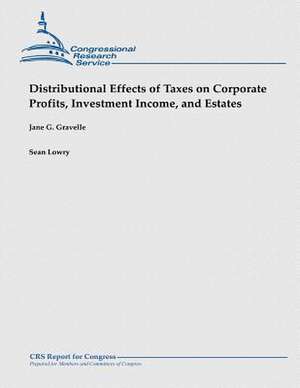Distributional Effects of Taxes on Corporate Profits, Investment Income, and Estates
Autor Jane G. Gravelle, Sean Lowryen Limba Engleză Paperback
Preț: 87.09 lei
Nou
Puncte Express: 131
Preț estimativ în valută:
16.66€ • 17.40$ • 13.79£
16.66€ • 17.40$ • 13.79£
Carte disponibilă
Livrare economică 14-28 martie
Preluare comenzi: 021 569.72.76
Specificații
ISBN-13: 9781481923651
ISBN-10: 148192365X
Pagini: 28
Dimensiuni: 216 x 280 x 2 mm
Greutate: 0.09 kg
Editura: CREATESPACE
ISBN-10: 148192365X
Pagini: 28
Dimensiuni: 216 x 280 x 2 mm
Greutate: 0.09 kg
Editura: CREATESPACE
